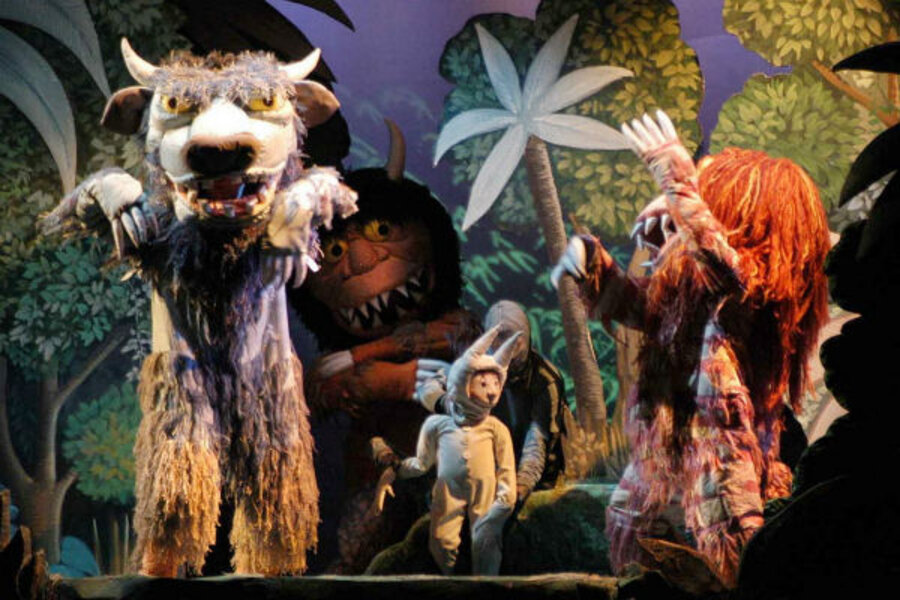Sendak's closest friends near at deathbed
Loading...
Maurice Sendak's closest friends gathered in his hospital room — playwright Tony Kushner, authors Brian Selznick and Gregory Maguire. Kushner brought jellybeans, while Maguire placed a picture of Lewis Carroll on the table beside Sendak's bed.
"The one thing he wasn't uncertain about was his significance," Maguire said Tuesday, hours after Sendak died at age 83. A scowling monument of 20th century children's literature, Sendak had suffered a stroke late last week and spent his remaining days hospitalized in Danbury, Conn.
"He always identified with his heroes from the past and felt like they spoke to him and encouraged him to do brilliant work. So I thought I would give Maurice a glimpse of the people waiting for him on the other side."
Sendak, among the most honored and adored children's authors, ranks with Dr. Seuss as a revolutionary force of the past half-century. He told stories about children that were actually about children, and not what adults wished them to be. He inspired every author, from Judy Blume to Daniel Handler, who ever wanted to go a little too far.
"It's almost impossible to overstate his importance," says Handler, known for the Lemony Snicket "Series Of Unfortunate Events" books. "He's a North Star in the firmament of anyone who makes children's books, in particular for his dark and clear-eyed view of the world that was kindred to me when I was in kindergarten and kindred to me now. He gives neither the comfort nor the horror of sentimentality."
"He got right inside what a child was thinking and feeling," said Blume, a close friend of Sendak's who cried as she spoke of him. "I always loved hearing him say that you didn't have to have a child to write children's books. What you have to have is a memory of your own childhood."
Censors complained (although not as often as Sendak alleged), but millions of families have made a place — or even a whole shelf — in their homes for "Where the Wild Things Are," ''In the Night Kitchen" and other works. To have childhood memories of reading often means to have a story to tell about Sendak.
Maguire, 57, said his family couldn't afford many books, but he recalled his father buying "The Nutshell Library," four pocket-sized hardcovers that included "Pierre" and "Chicken Soup With Rice."
"We read them to shreds, until they were just bits of tissue paper lying around the room because we couldn't get enough of them," says Maguire, author of four "Wicked" novels and of "Making Mischief: A Maurice Sendak Appreciation."
Chris Raschka, a two-time recipient of the Caldecott Medal for best illustration in a children's book, remembers reading "Where the Wild Things Are," winner of the Caldecott in 1964. Raschka, 53, was sitting on the kitchen table at his best friend's house and picked up a copy lying nearby. He felt as if he were "peeking into an illicit world."
"What set it apart was that it seemed like the first picture book that was very personal, and it was painted by an artist who combined the child and the adult in a new way," says Raschka, who works with Sendak's longtime editor, Michael di Capua.
"Maurice Sendak is really the illustrator's illustrator. He's a stronger presence than anyone else, certainly than any living illustrator. He just represented a very personal, fine art approach to making books that is an inspiration to all of us."
Sandra Boynton, the award-winning illustrator, author and songwriter, regarded Sendak as a teacher for much of her life. As a little girl, she was so taken by his illustrations of "The Little Bear" series, that she promised herself she would learn the words, too, and so credits Sendak with helping her learn to read. In the 1970s, she was among the very lucky at Yale University able to take a class Sendak was offering on children's books.
"He talked a lot about voice, about finding your voice, and, of course, he was very visually oriented as well," says Boynton, 59, whose many books include "Philadelphia Chickens" and "Amazing Cows." ''The thing that struck me the most of what he said was that the words should never be redundant to the picture. They both have a place."
Handler, 42, says Sendak has been so much a part of his life he can't think of a time he wasn't aware of him. Sendak's books were all over his room and in his home today. To even attempt praise of "Where the Wild Things Are" is like saying "Hamlet" is a good play, he notes. Sendak's genius is how he weaves together the real and the magical without telling you which is which.
"'Where the Wild Things Are' starts with a boy being sent to his room and proceeds to take him to an enormous and irrational world without really telling us if it's real. But if you're a small child it does seem real and that's what matters," Handler says.
"Both my son and my wife cried this morning at the news of his death. That might sum up his career in a nutshell."







